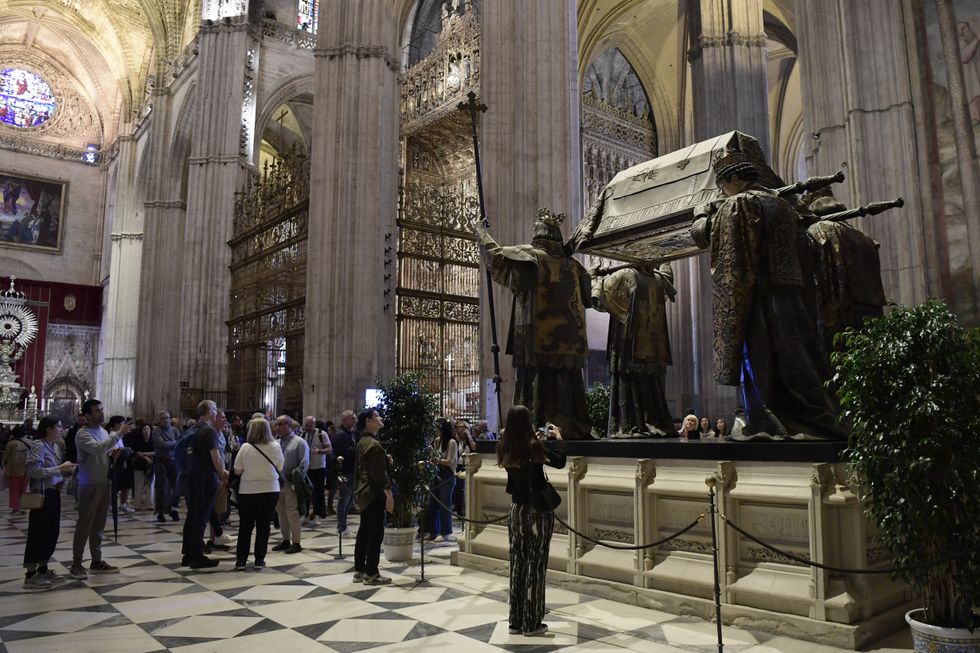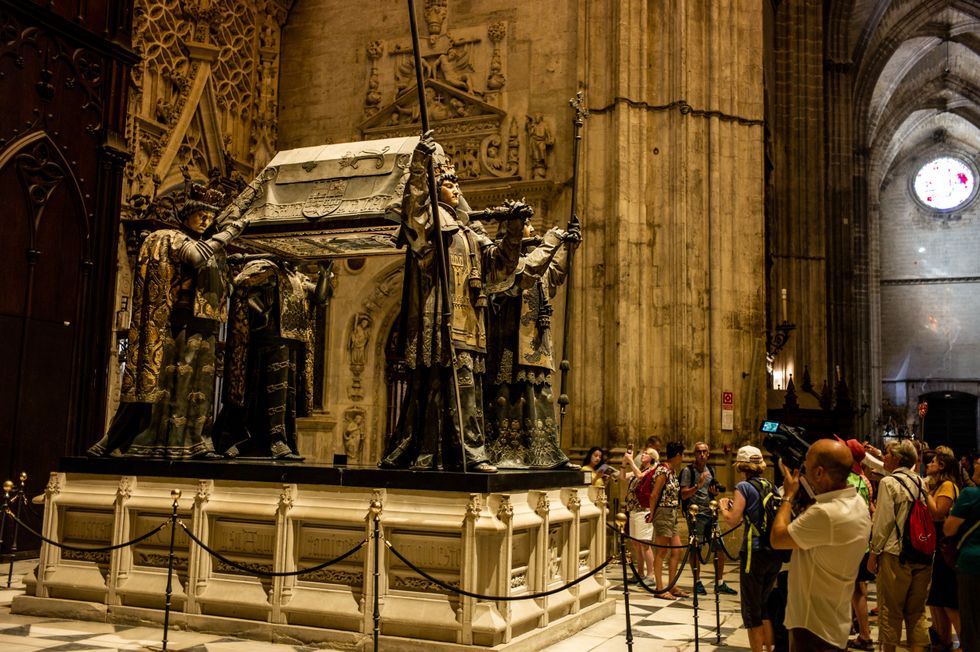Scientists have conclusively proven that the remains of Christopher Columbus are indeed entombed in Seville Cathedral, settling a long-standing mystery surrounding the explorer’s final resting place.
A groundbreaking DNA study, led by forensic medical expert José Antonio Lorente from the University of Granada, has “definitively confirmed” the identity of the incomplete set of remains housed in the cathedral.
This revelation comes just days before a highly anticipated television programme is set to unveil Columbus’s true origins, addressing another enduring enigma about the navigator who changed the course of world history.
The programme, titled “Columbus DNA: His True Origin”, promises to shed light on the explorer’s precise birthplace, a subject of intense speculation and competing theories for centuries.
The DNA study, conducted over several years, involved comparing the remains in Seville Cathedral with those of Columbus’s relatives.
Lorente explained: “Today, thanks to new technology, the previous partial theory that the remains in Seville are those of Christopher Columbus has been definitively confirmed.”
Christopher Columbus’ remains have been confirmed by DNA after years of mystery surrounding the tomb in Seville CathedralWIKICOMMONS/REUTERS/GETTY
The research team analysed DNA samples from the explorer’s remains and compared them with samples from his brother Diego and son Fernando.
This scientific breakthrough resolves one of the two lingering mysteries surrounding Columbus.
However, the question of his birthplace remains unanswered, with theories ranging from Italy to Sweden, Norway, Portugal, France, Greece, Scotland, and various Spanish regions.
The upcoming television programme claims to have narrowed down 25 possible origins to eight finalists, promising to reveal the definitive answer.
A groundbreaking DNA study, led by forensic medical expert José Antonio Lorente provided the conclusive answer
GETTY

Columbus’s remains have undertaken a remarkable journey since his death in 1506
GETTY
Lorente, whilst tight-lipped about the conclusions, stated: “There are some really important results – results that will help us in multiple studies and analyses that should be evaluated by historians.”
Columbus’s remains have undertaken a remarkable journey since his death in 1506.
Initially, the explorer wished to be buried on the island of Hispaniola, now divided into Haiti and the Dominican Republic.
His remains were transported there in 1542, only to be moved to Cuba in 1795.
Following Spain’s loss of Cuba in the Spanish-American war, the remains were brought to Seville in 1898. This final transfer led to their current resting place in Seville Cathedral.
Lorente noted that parts of Columbus might still be in the Caribbean. In 1877, an excavation of Santo Domingo Cathedral unearthed a small lead box containing bone fragments marked as belonging to Columbus.
These remains are now interred at the Faro a Colón monument in Santo Domingo Este.
Lorente suggested that as both sets of bones were incomplete, they could potentially belong to the explorer.


